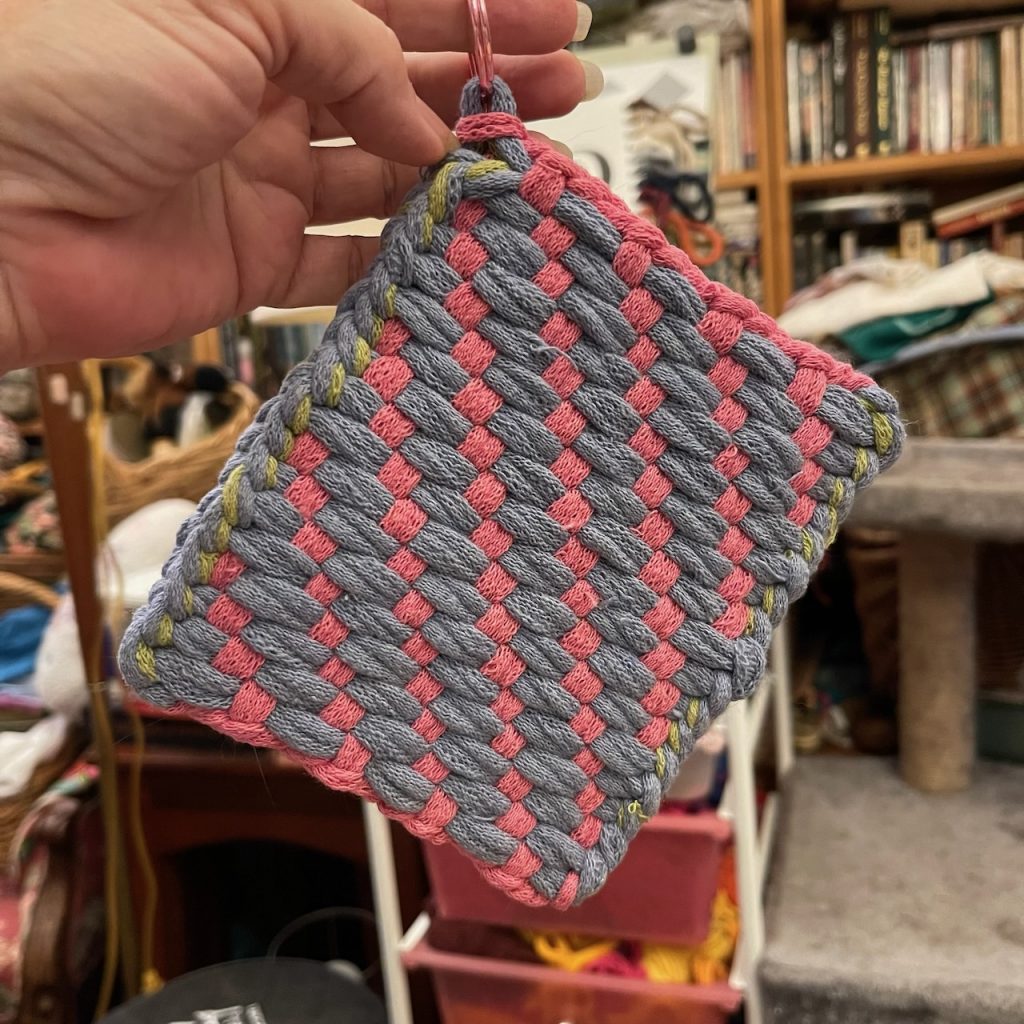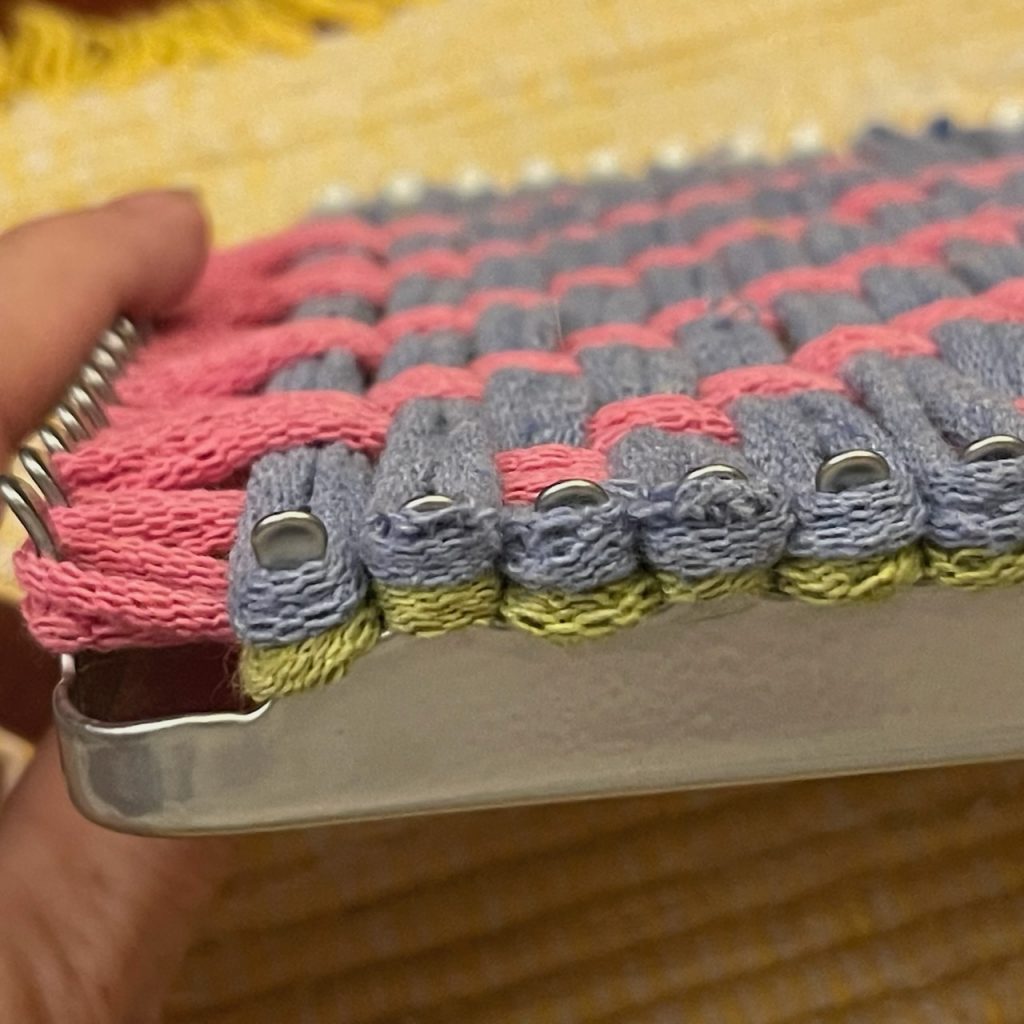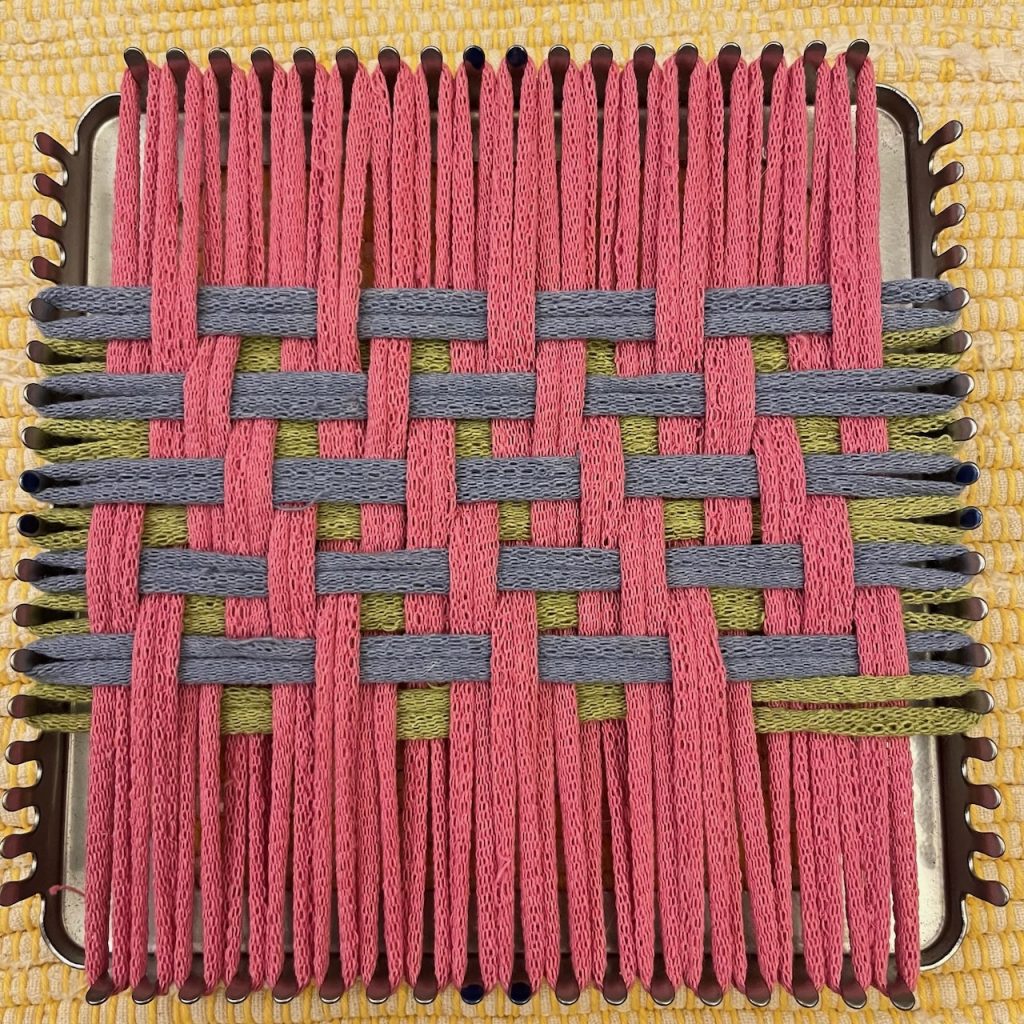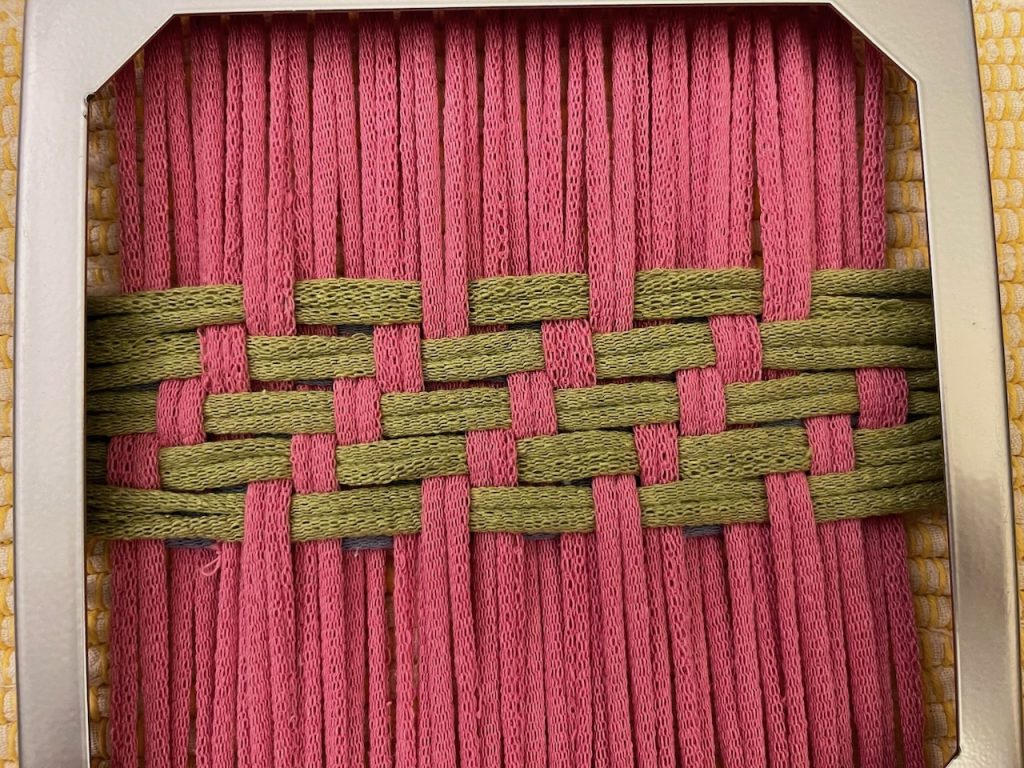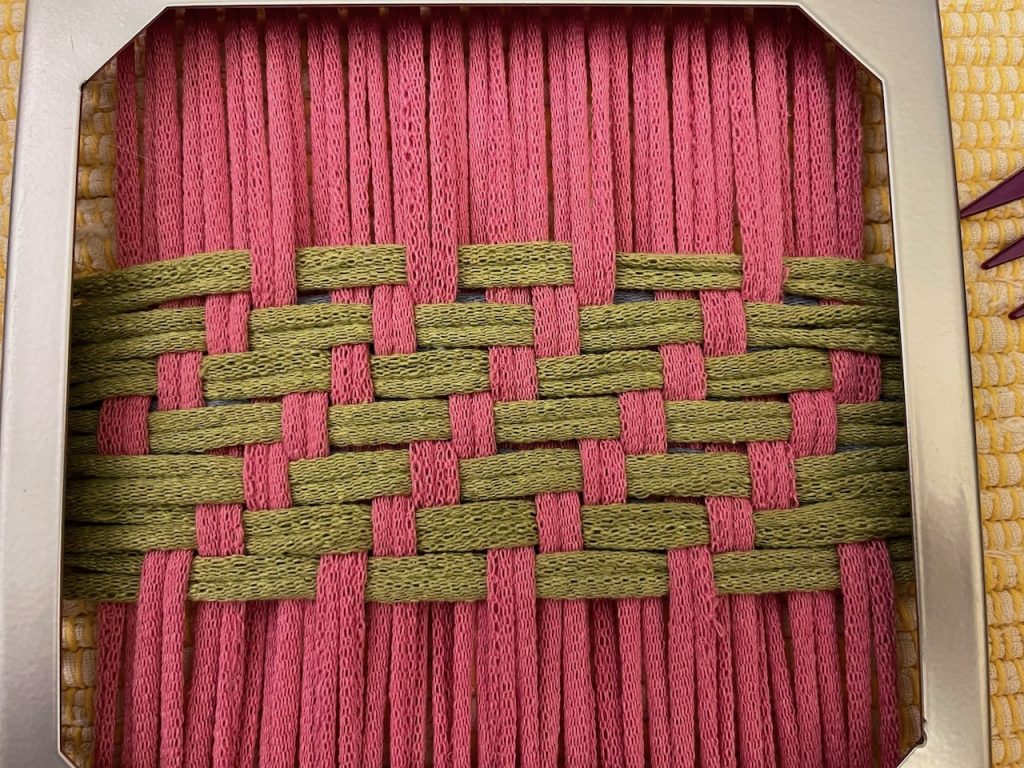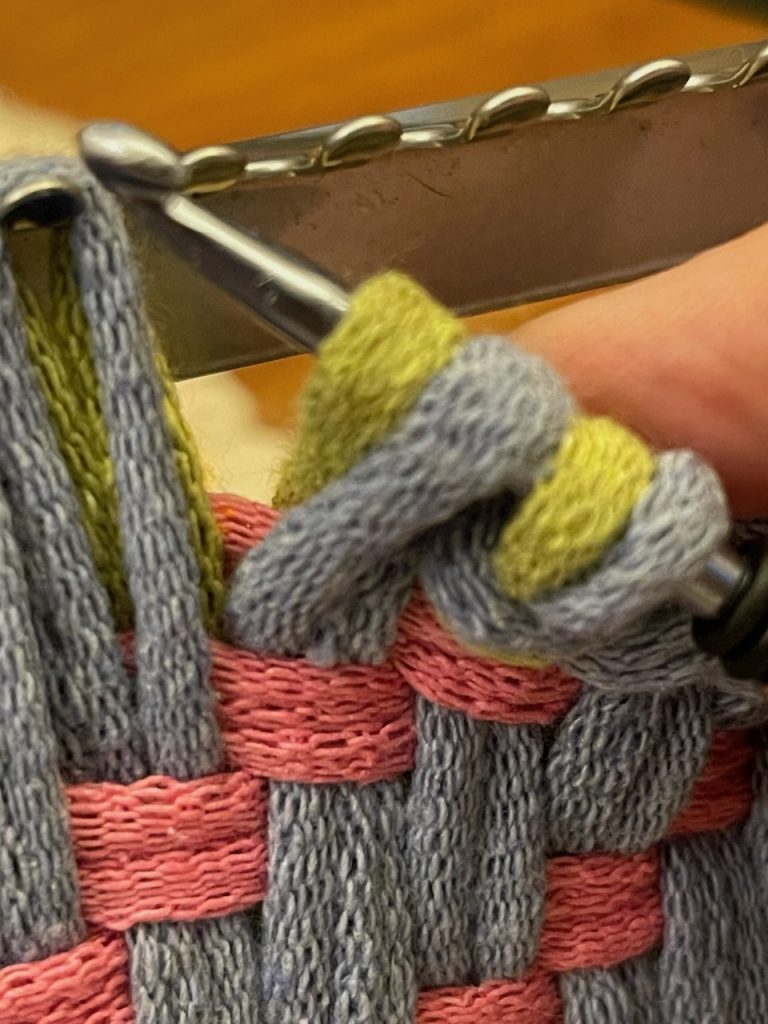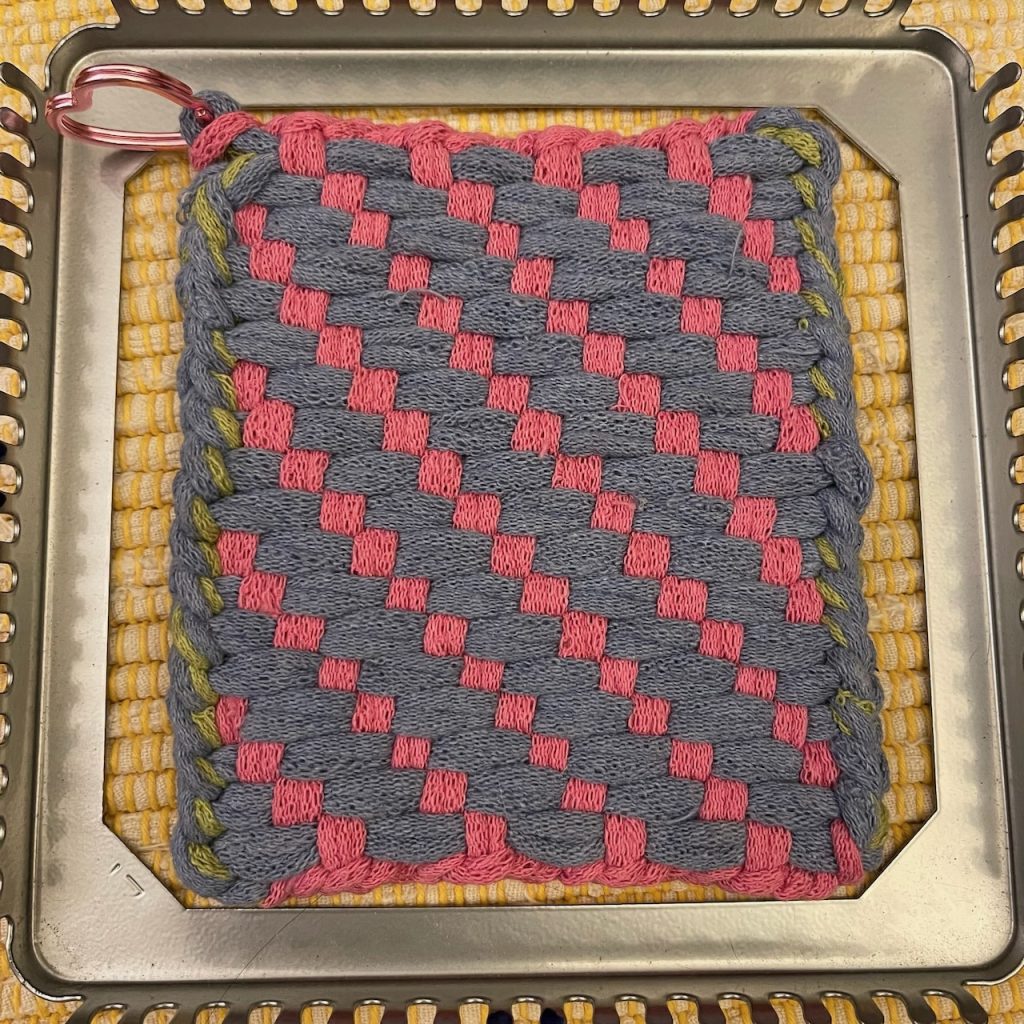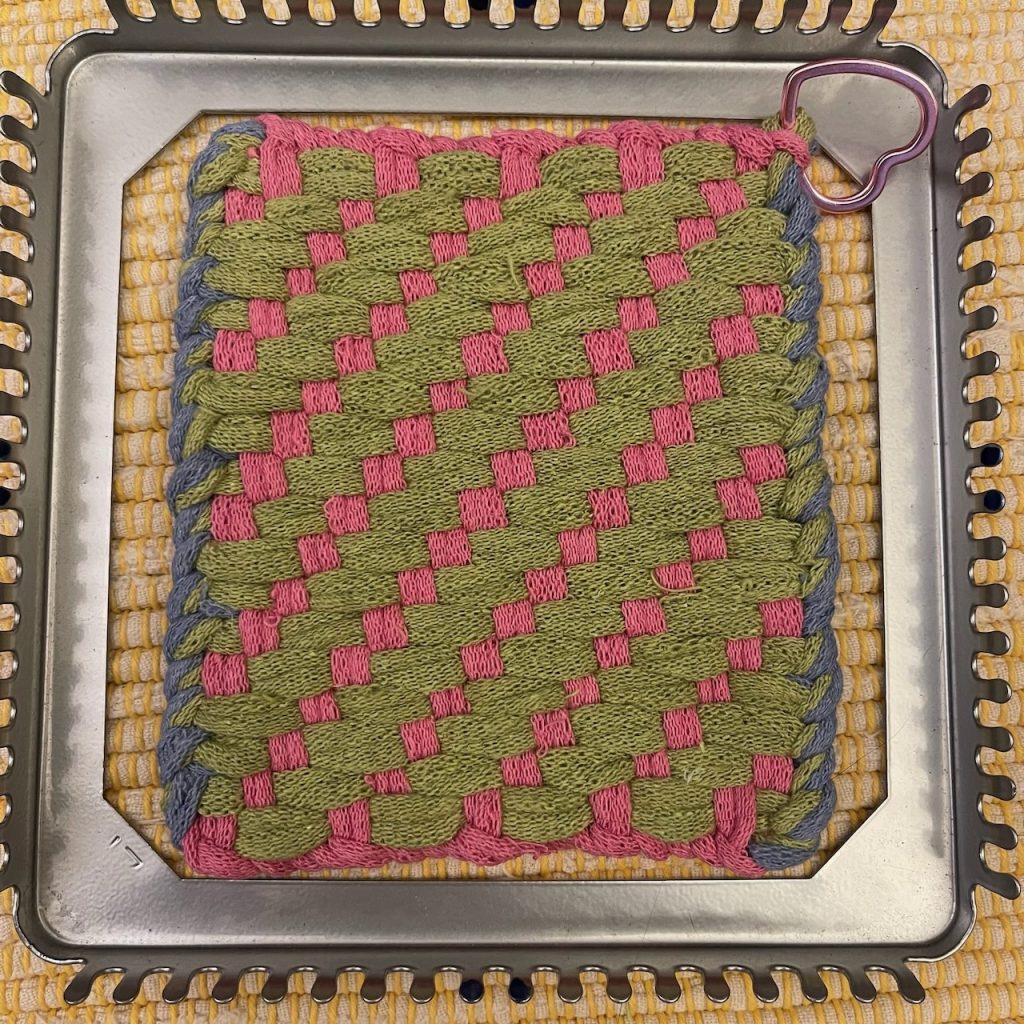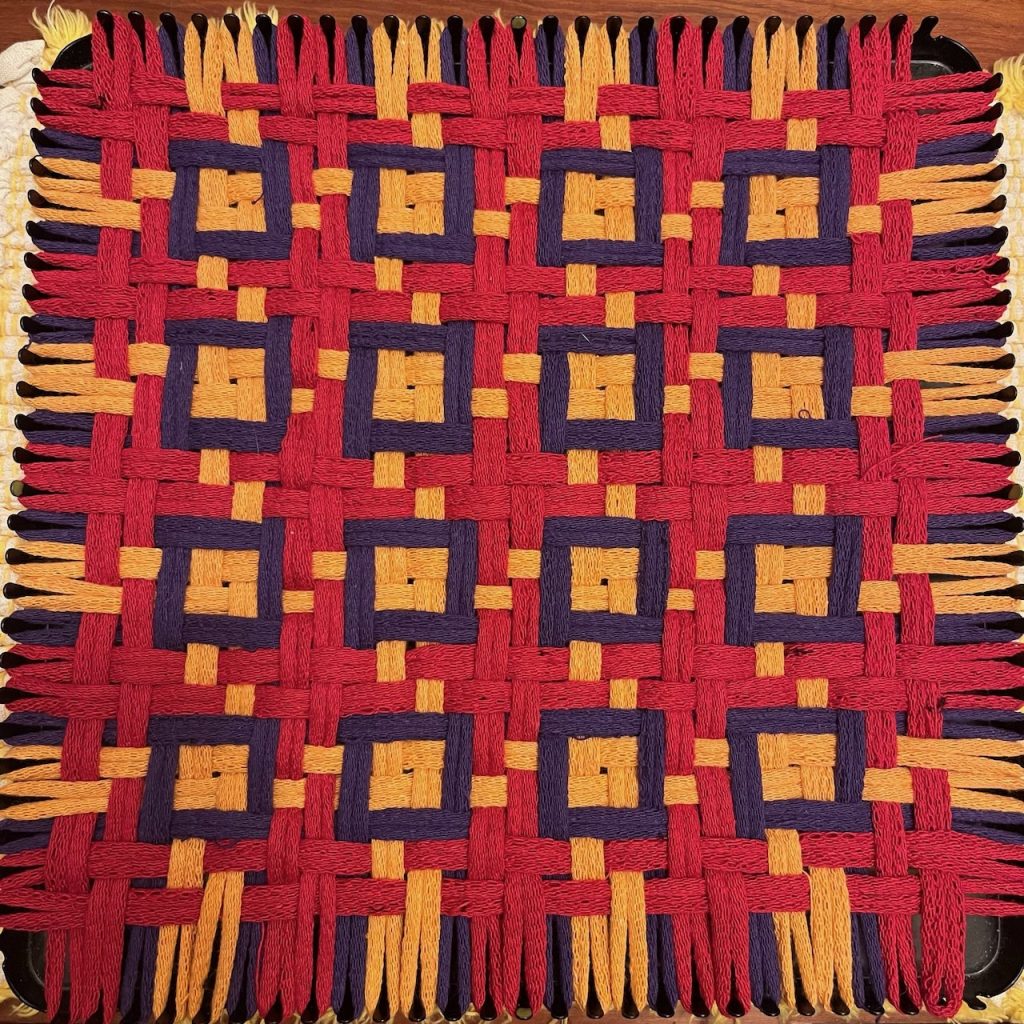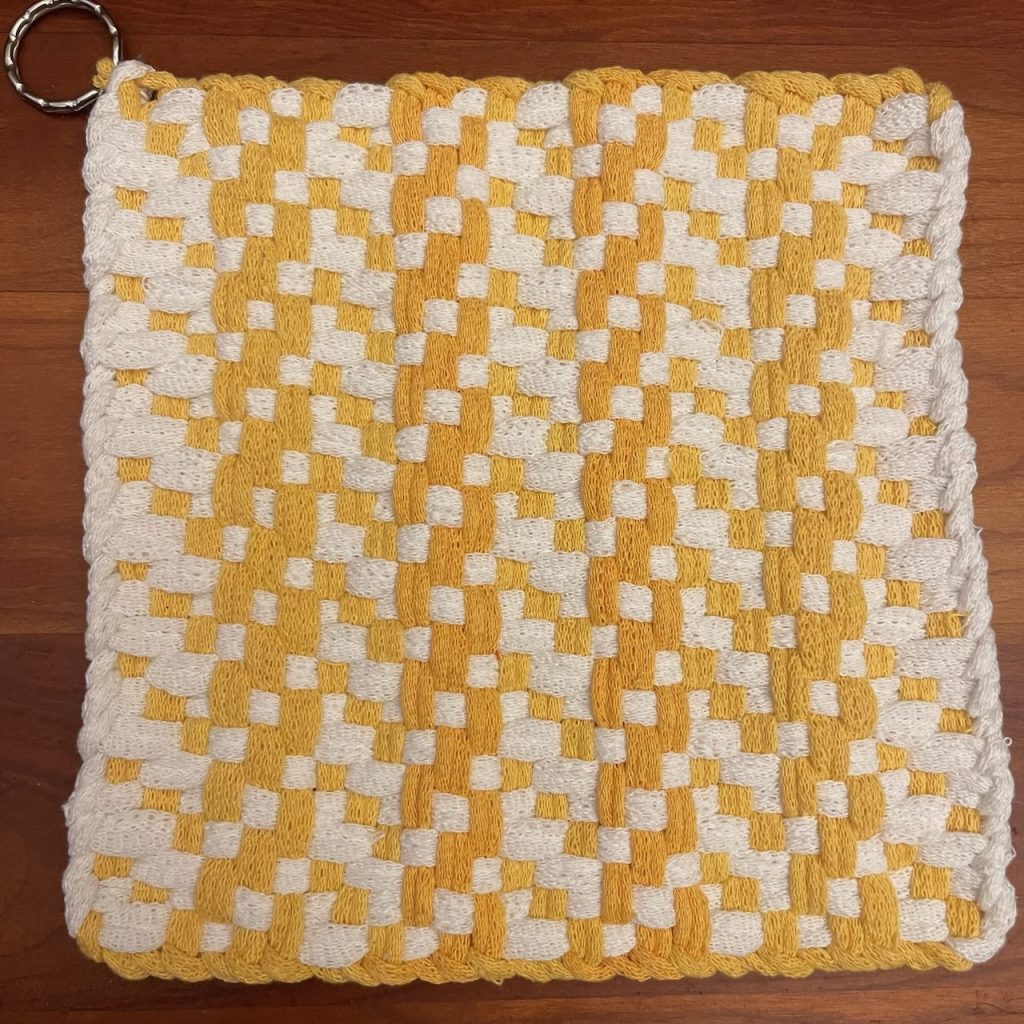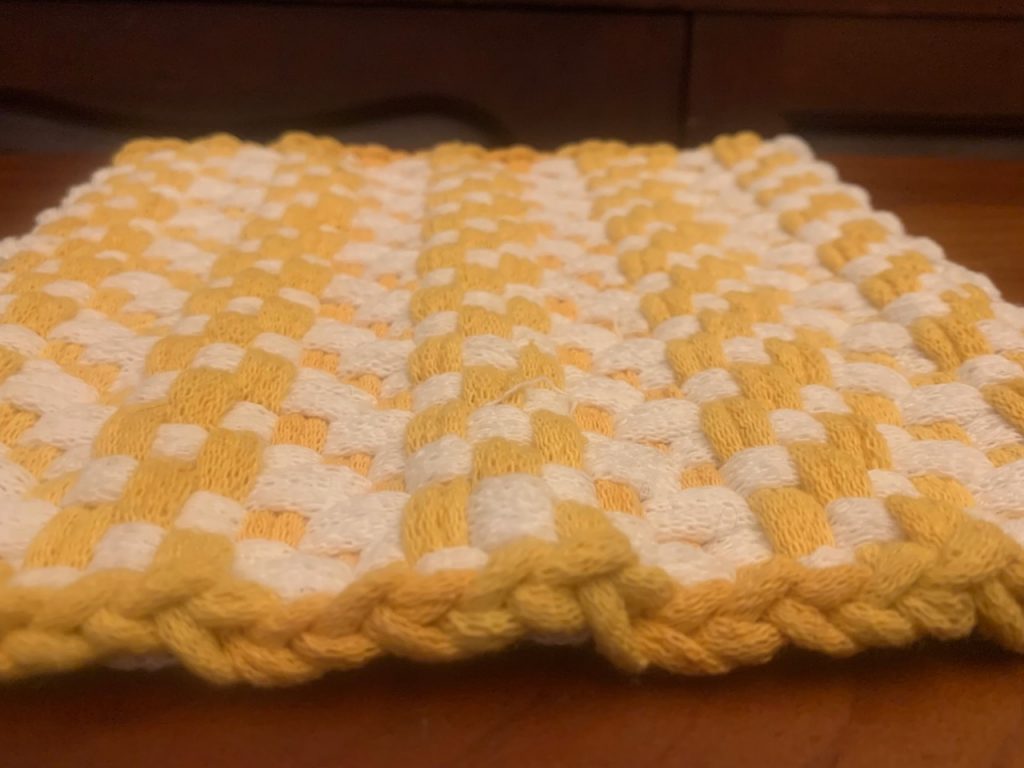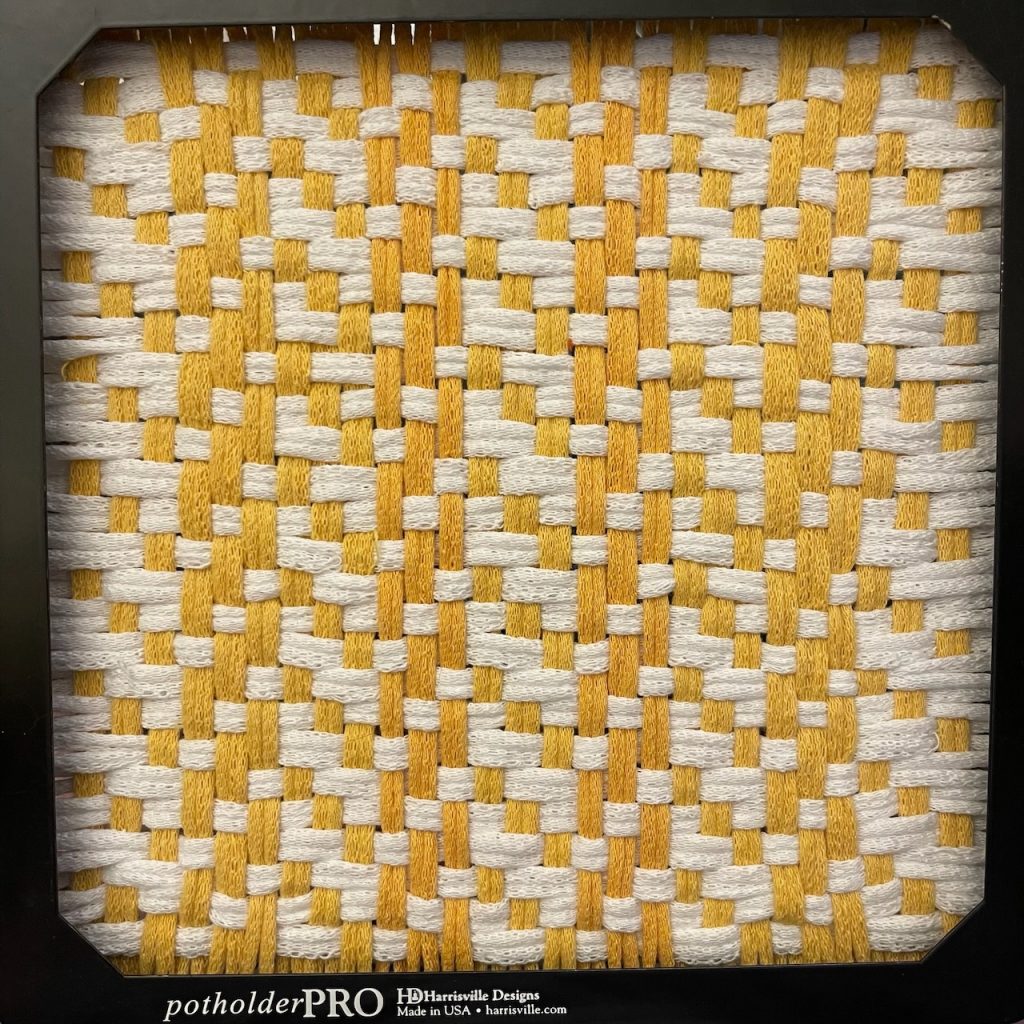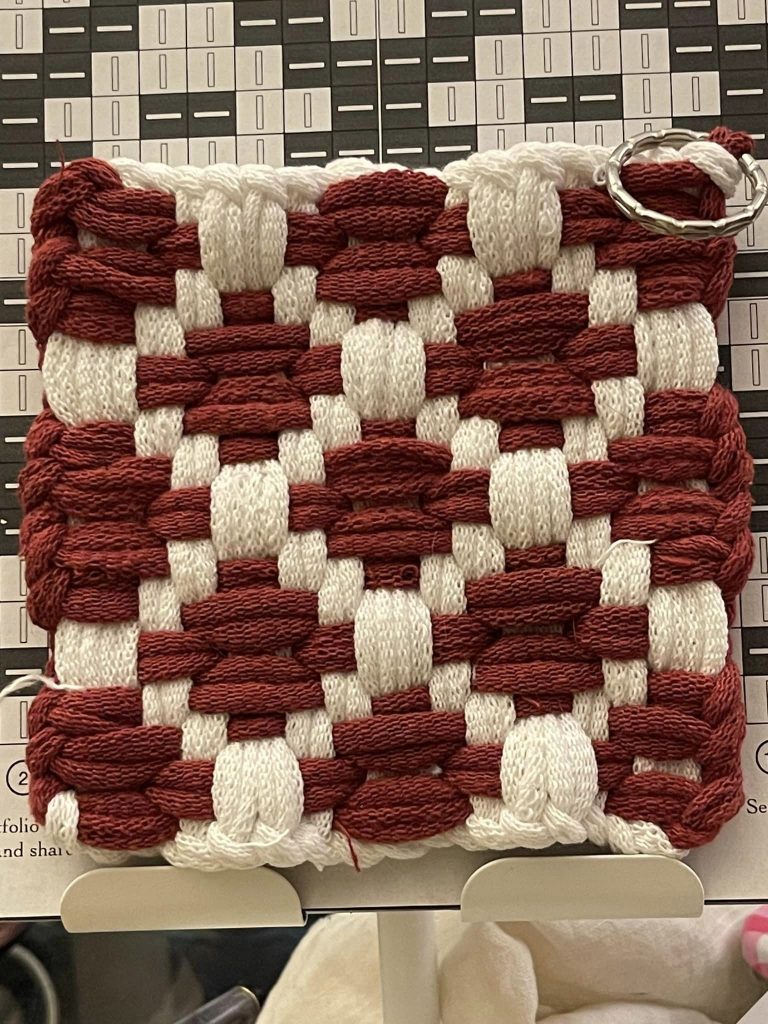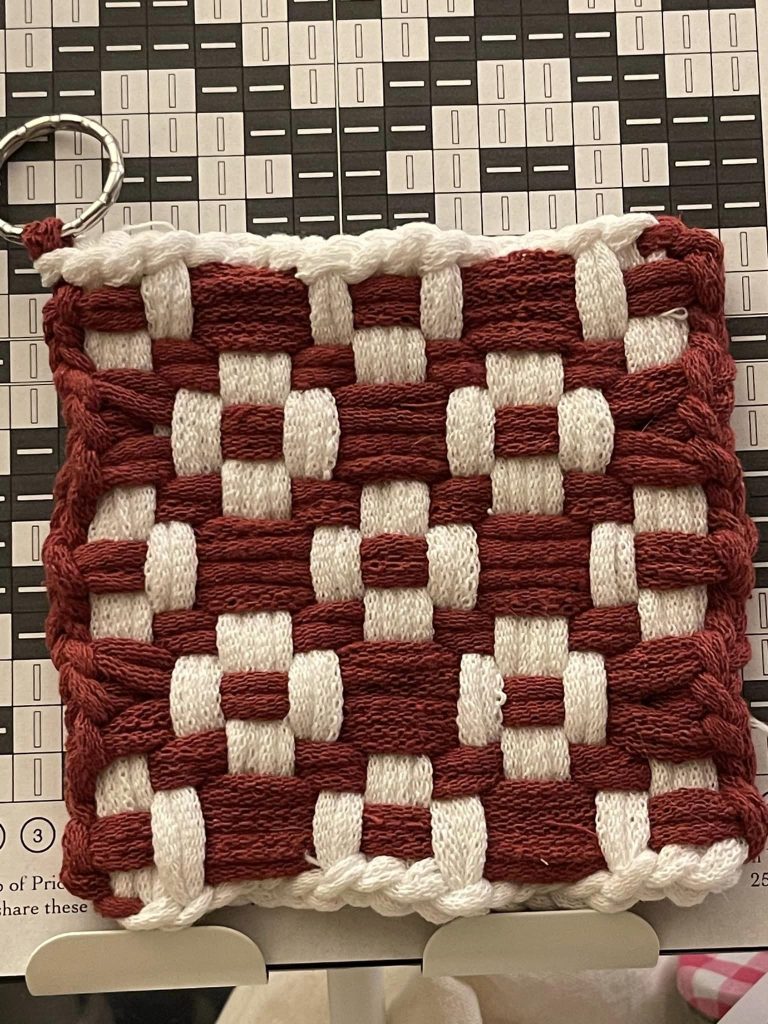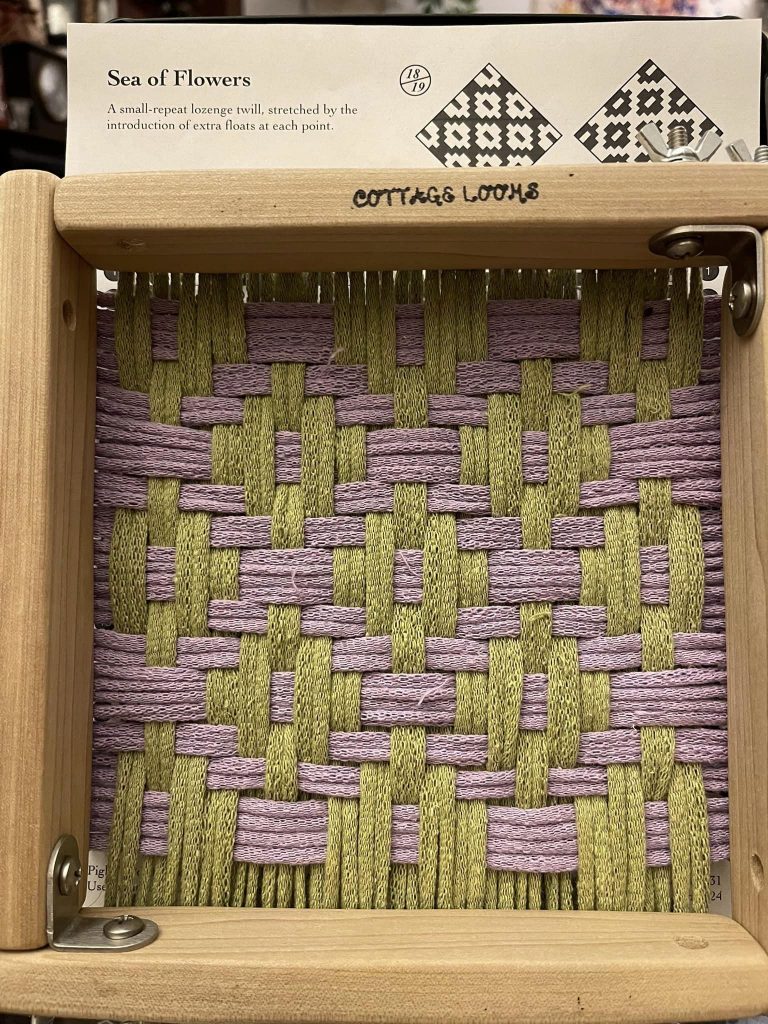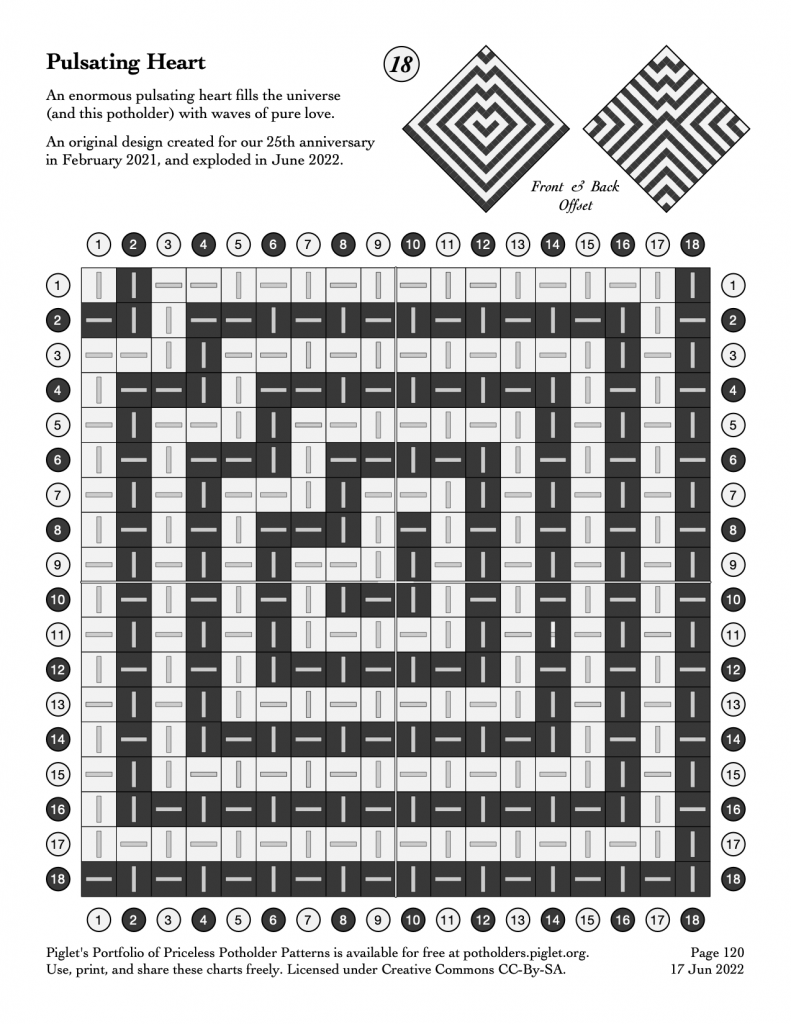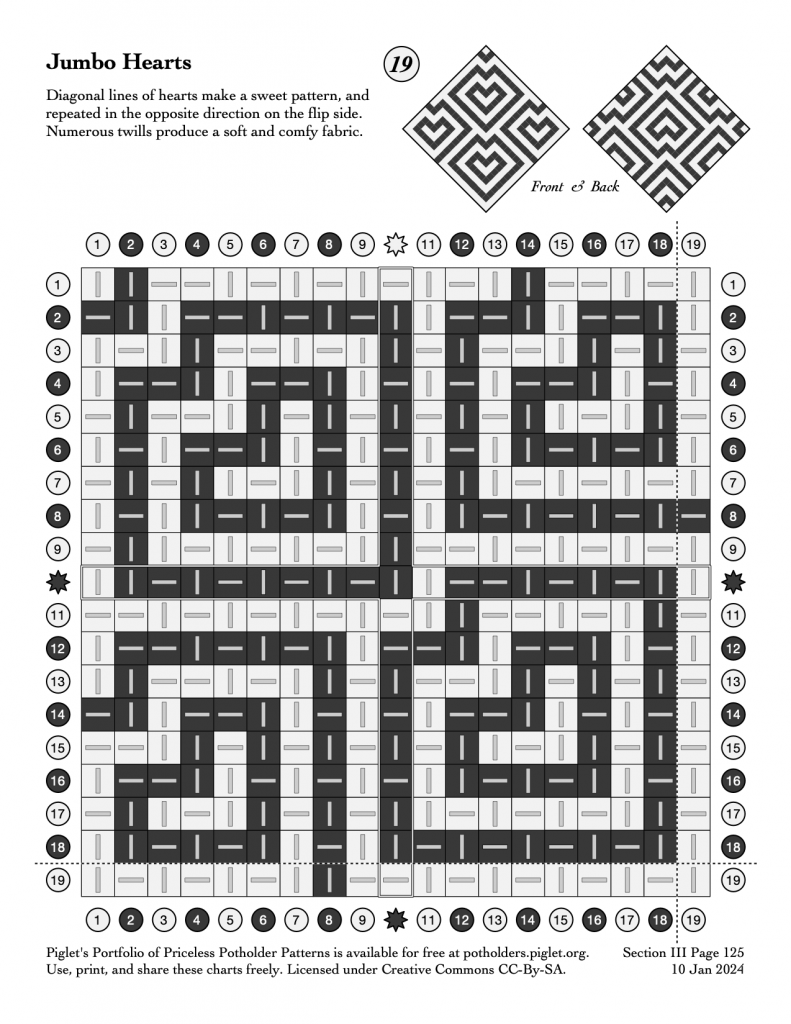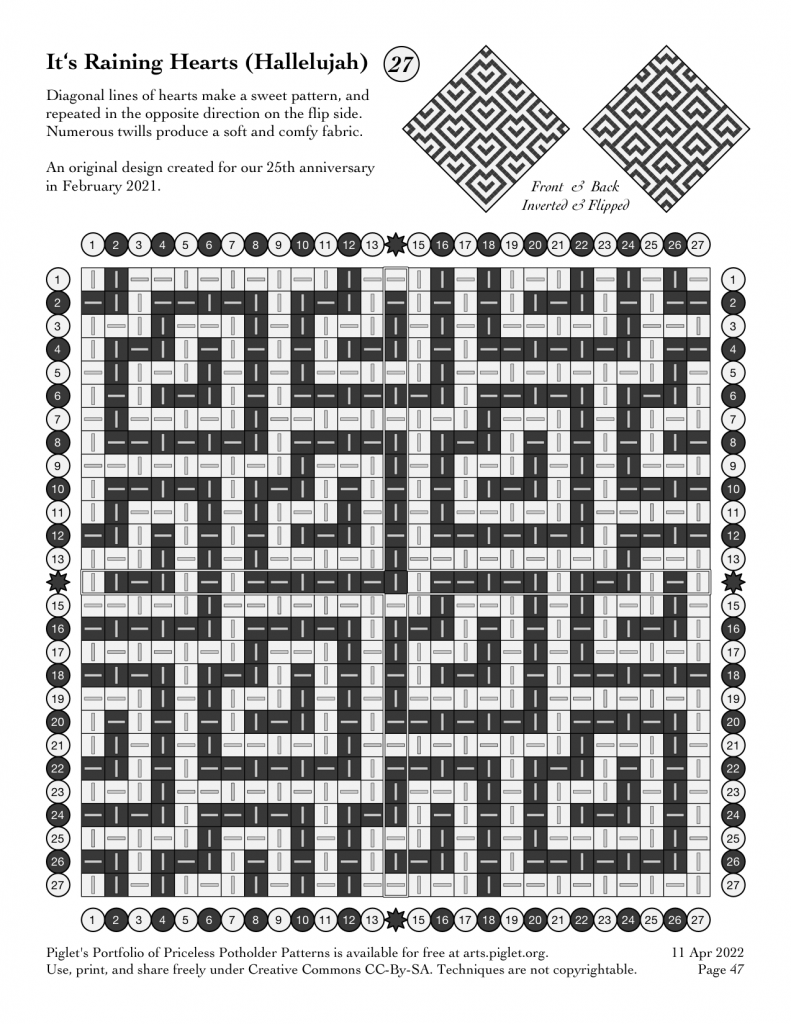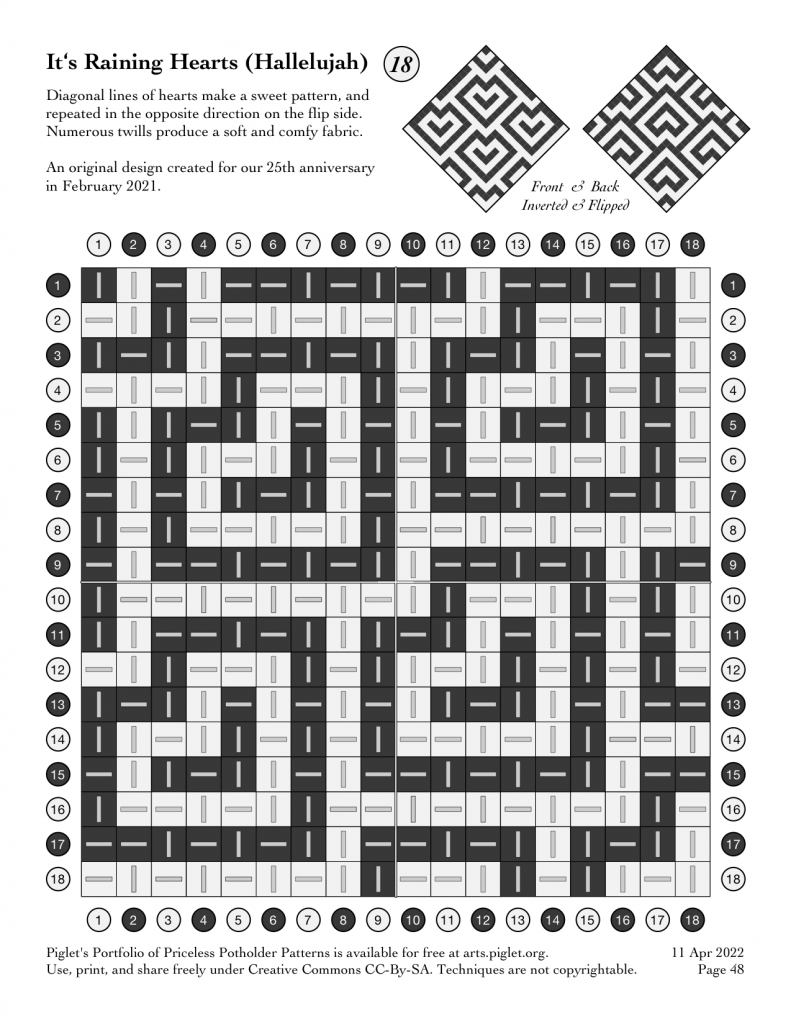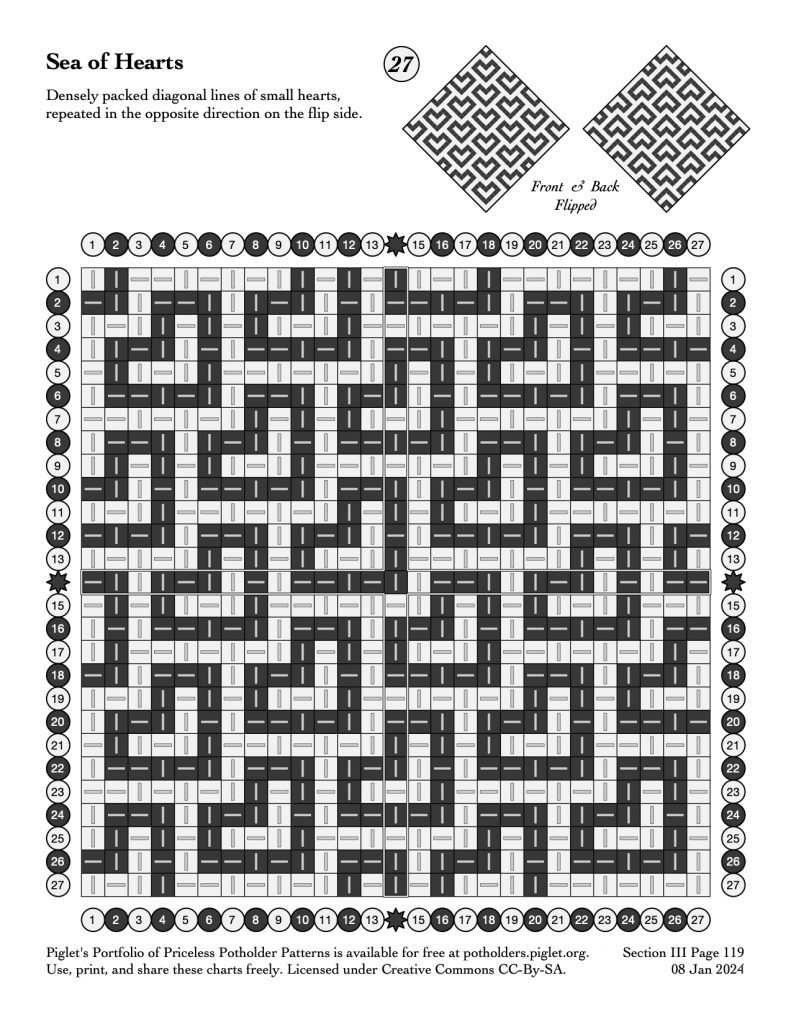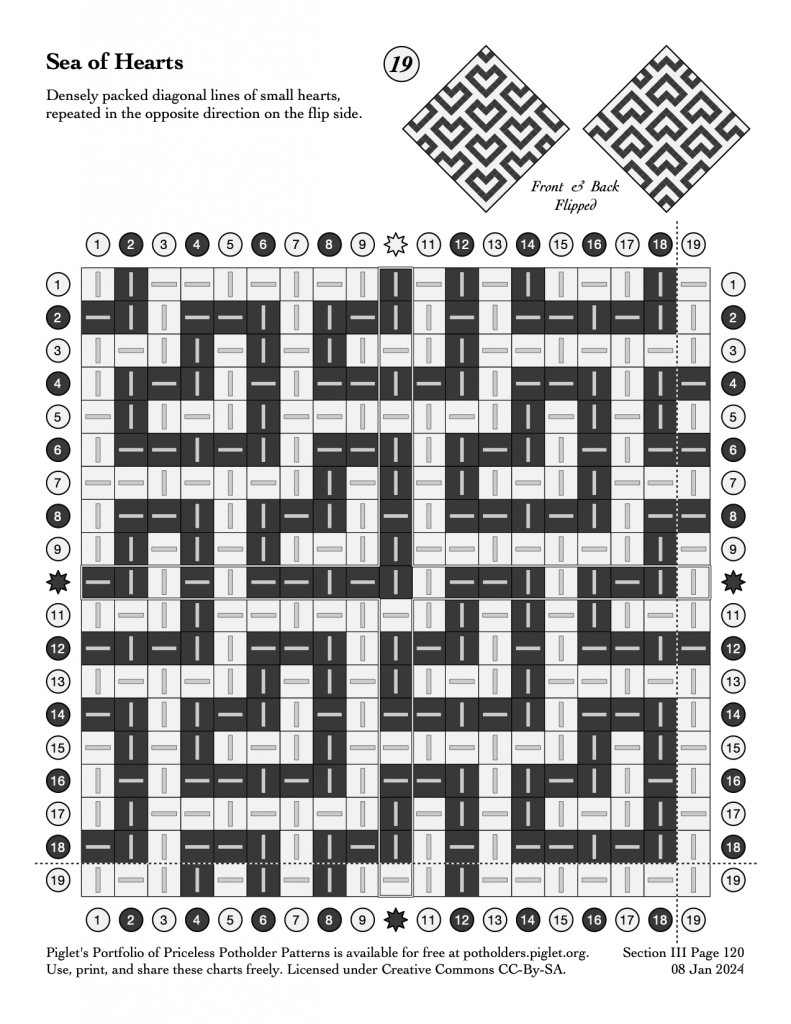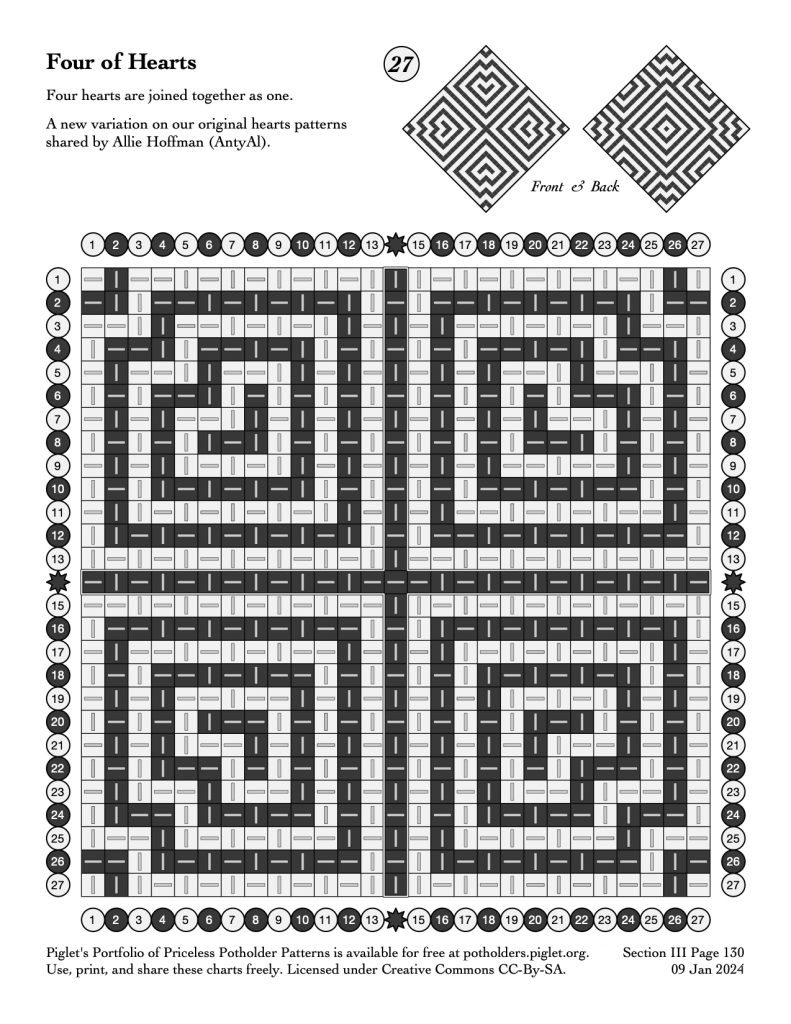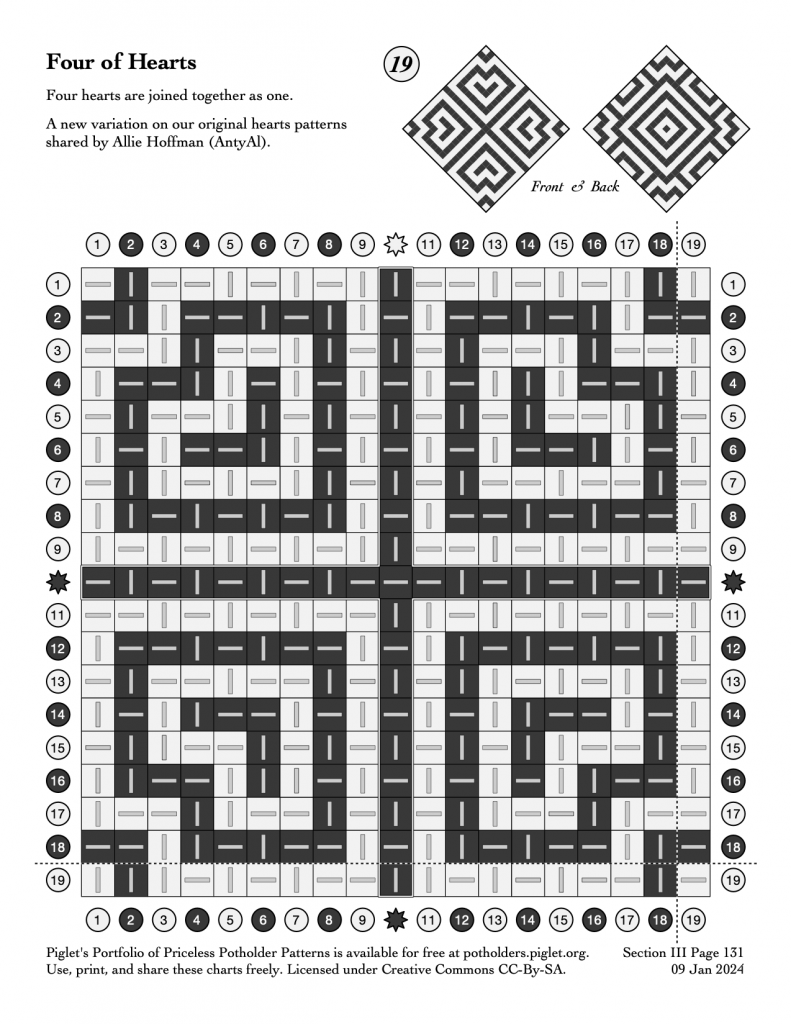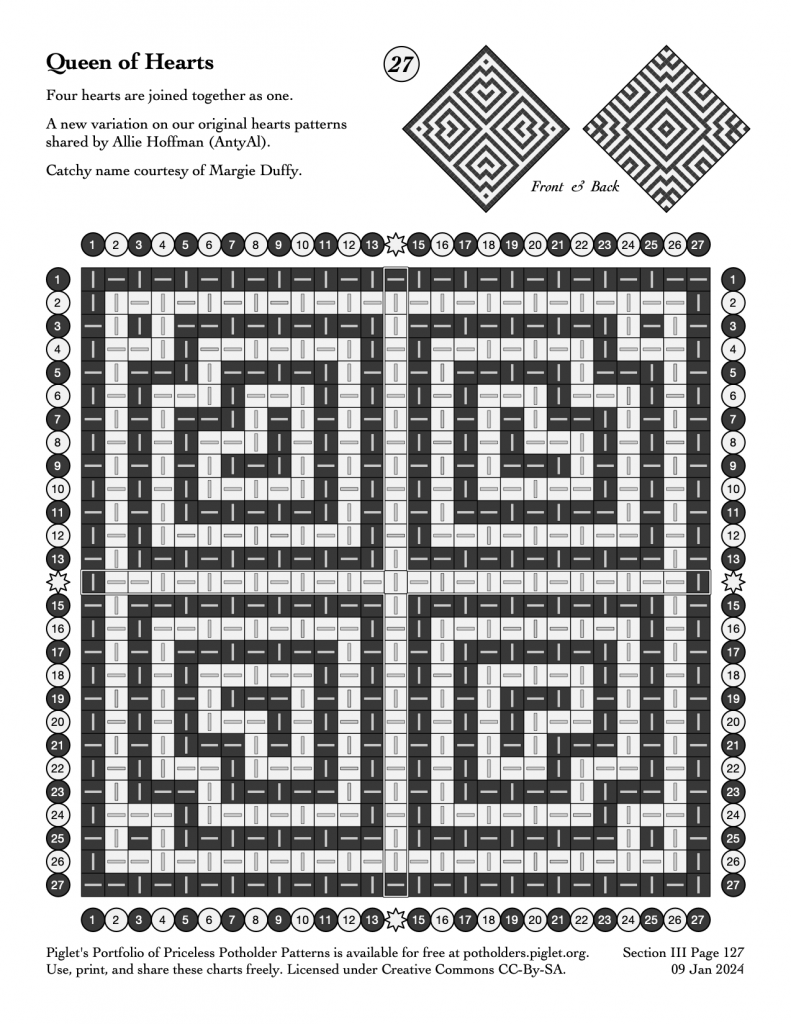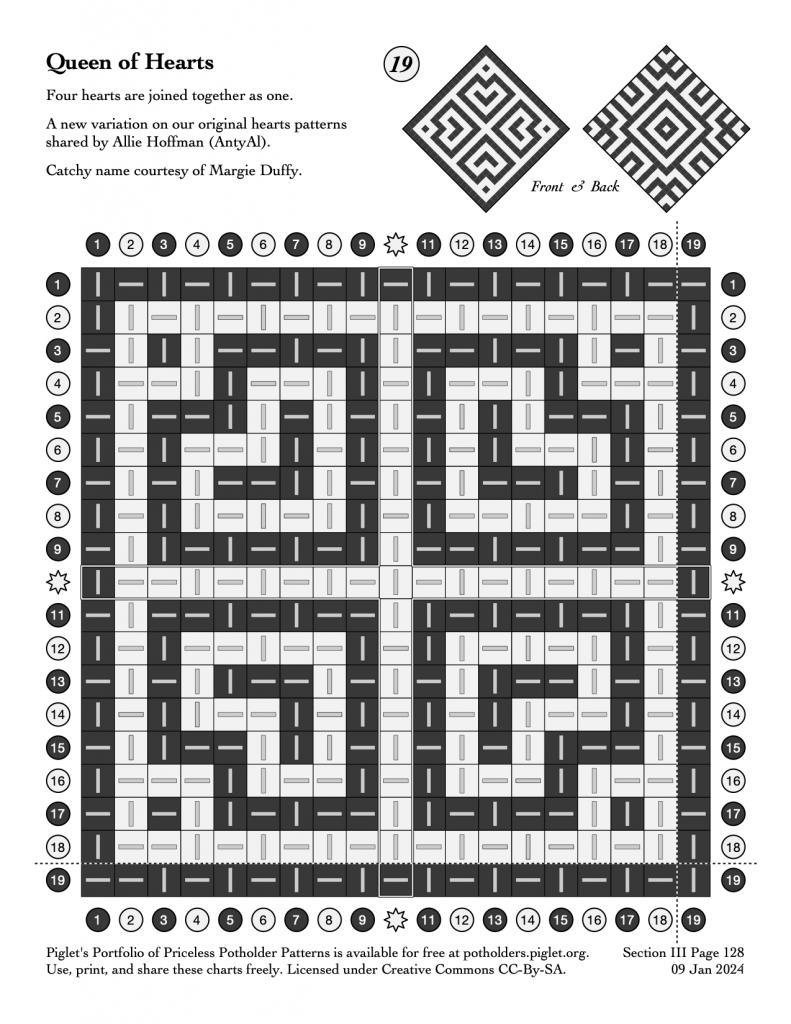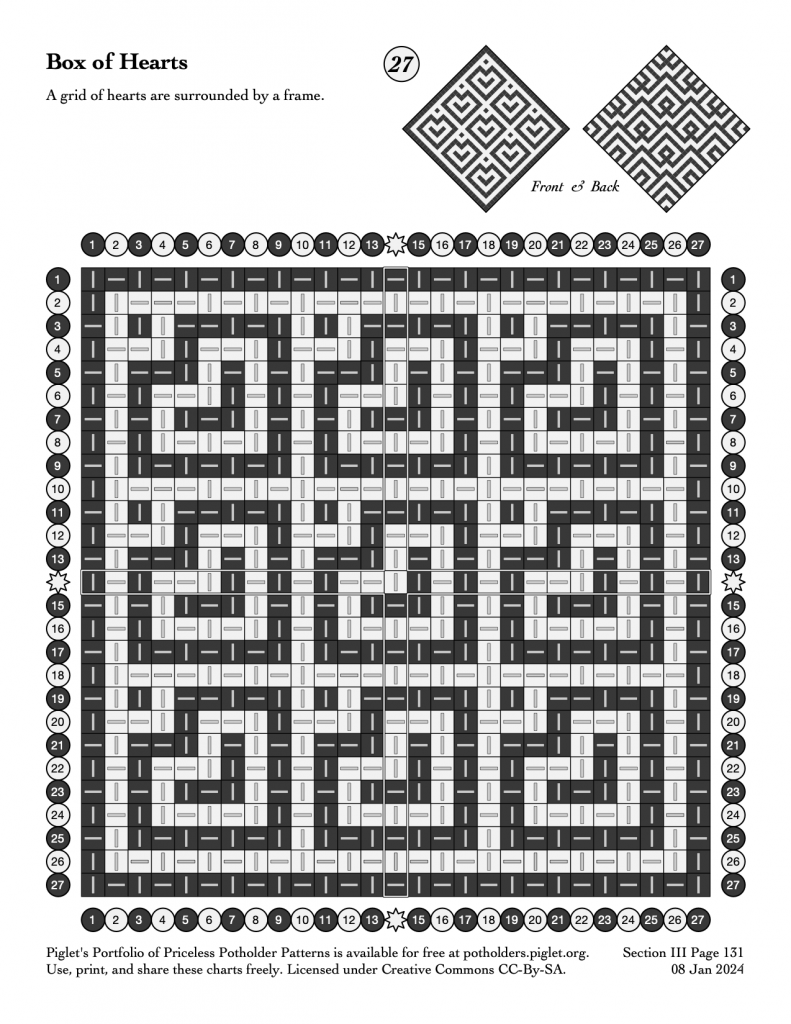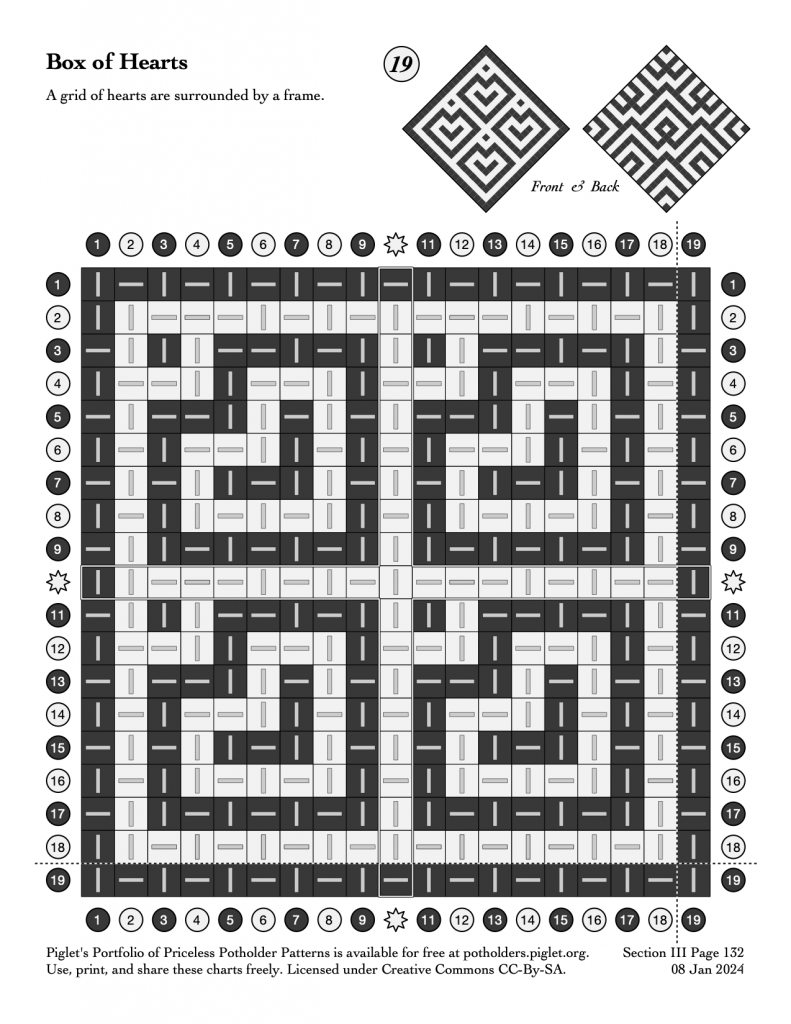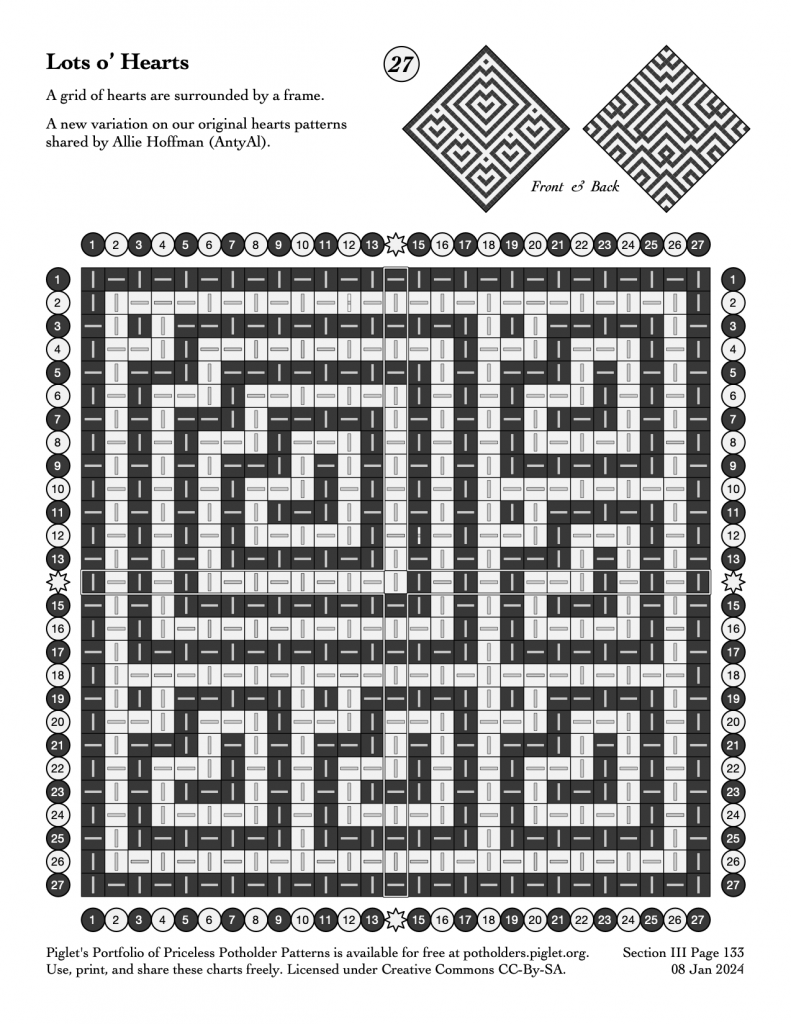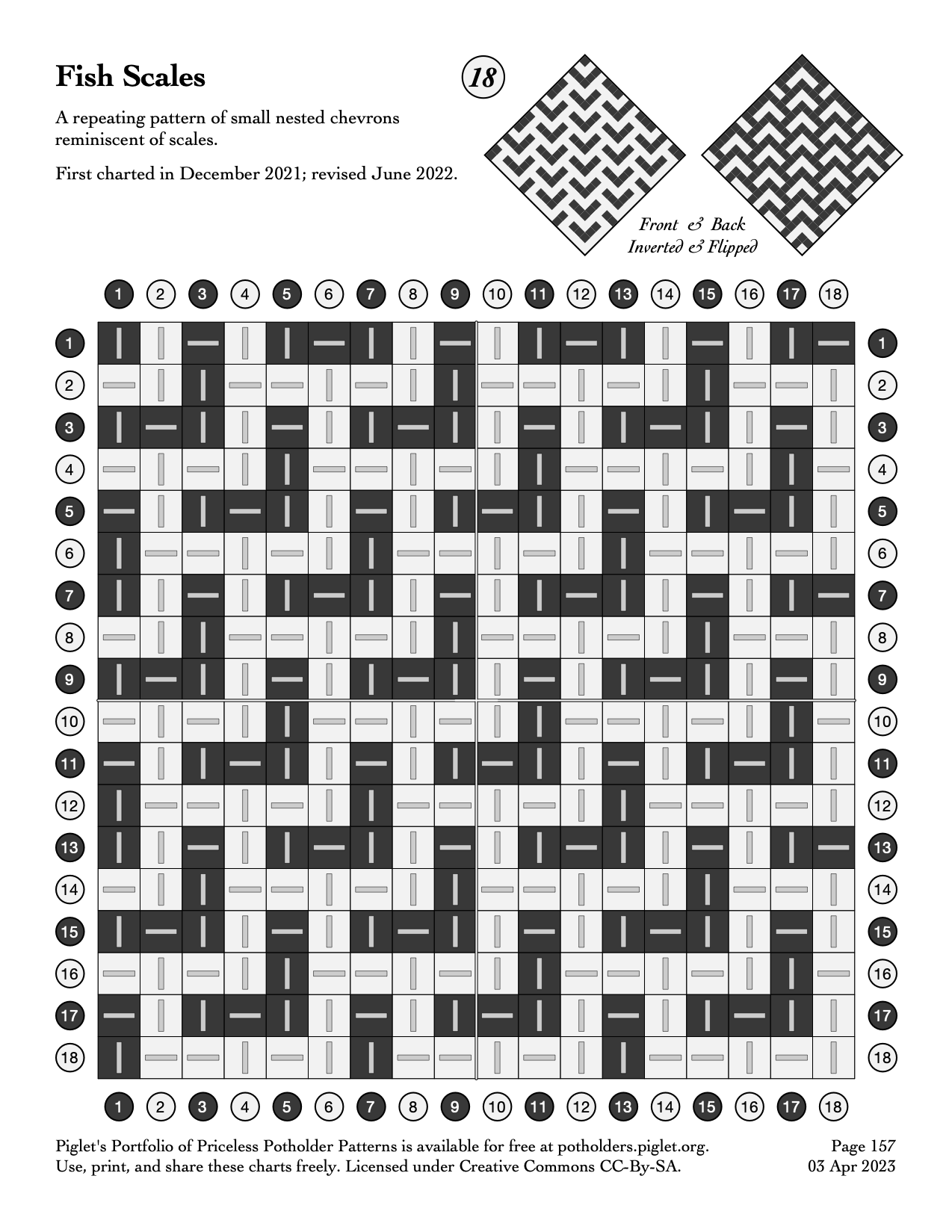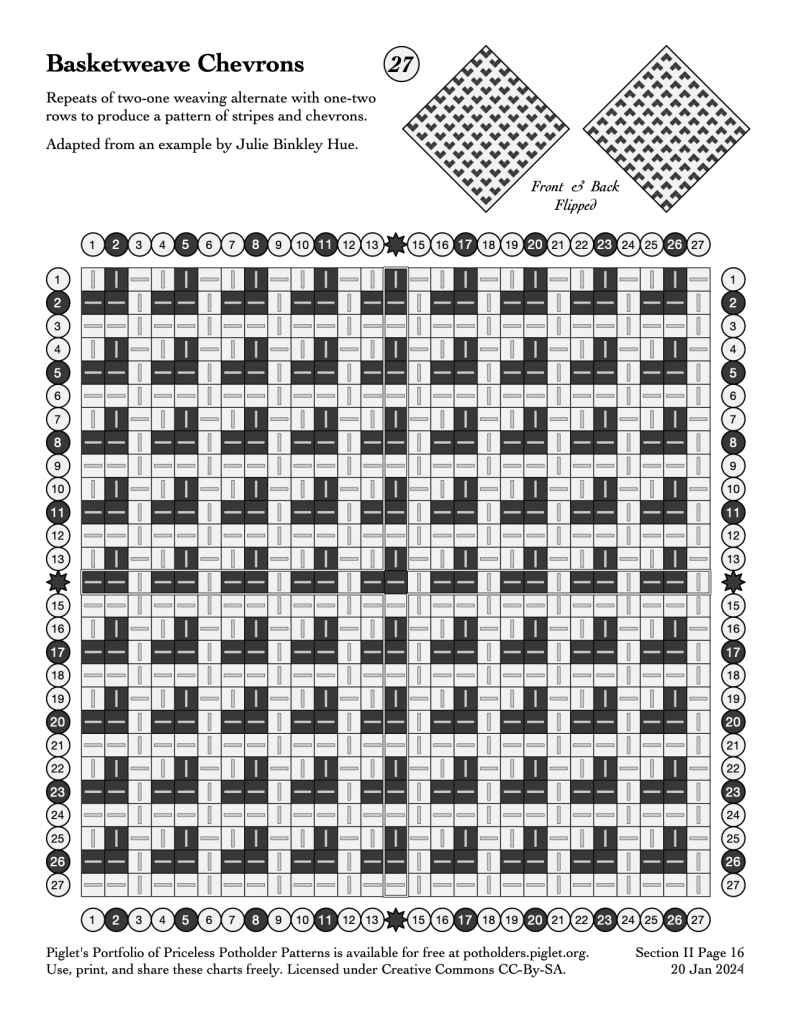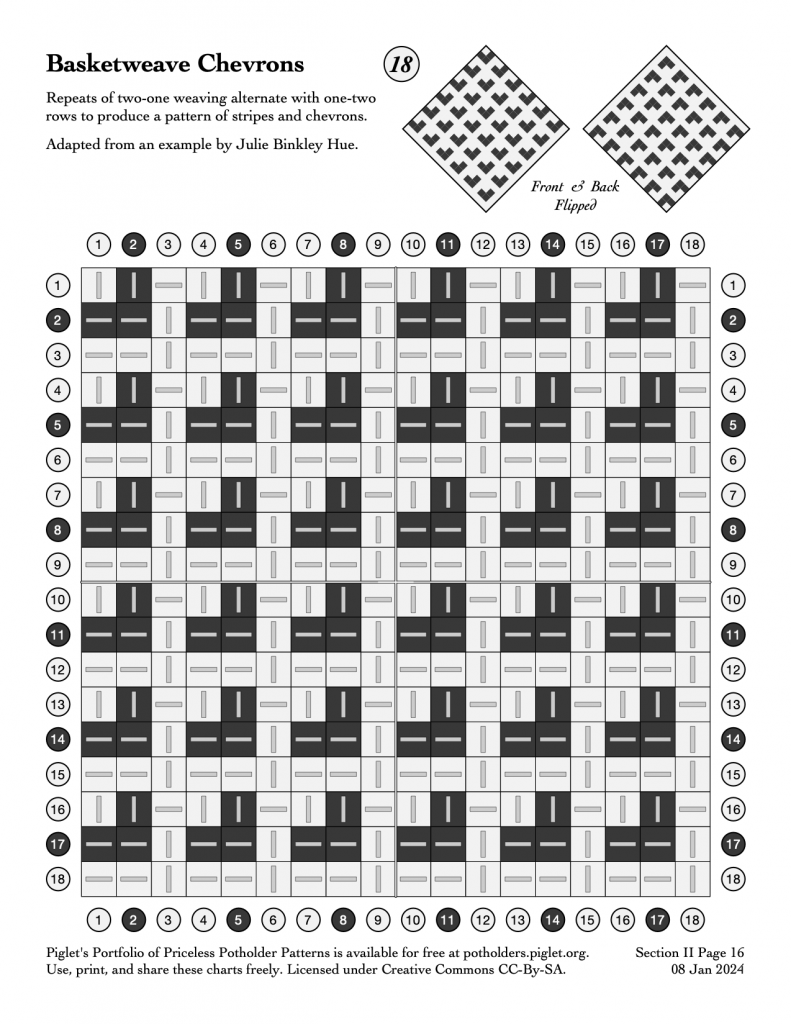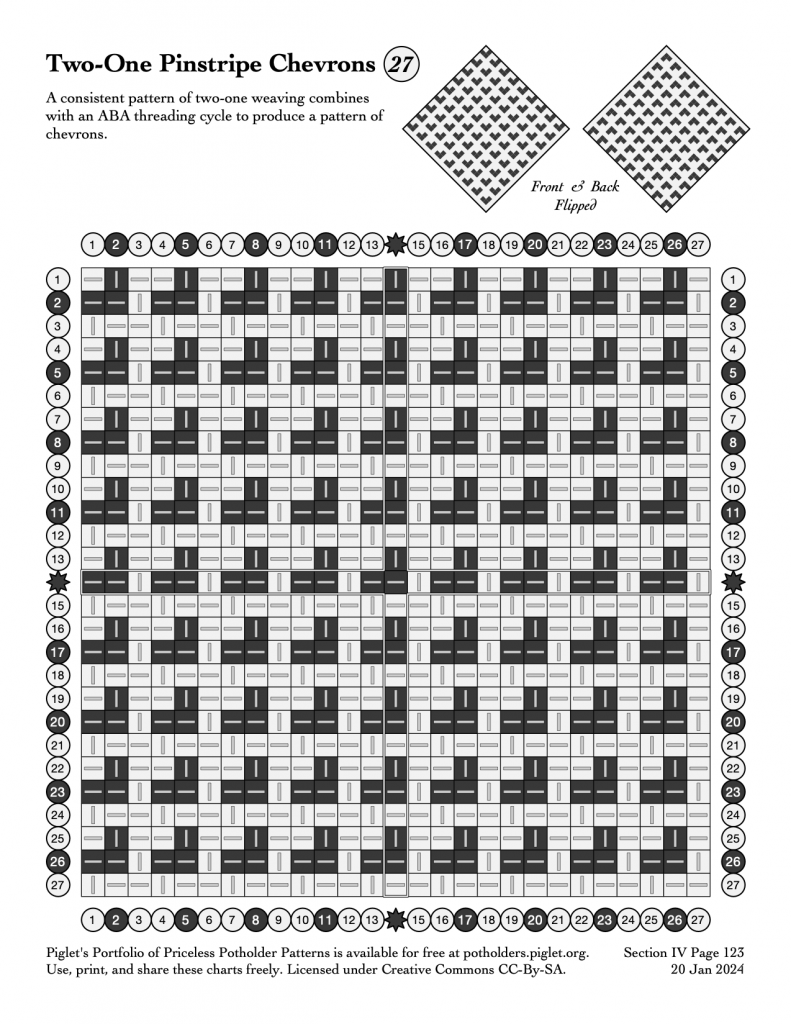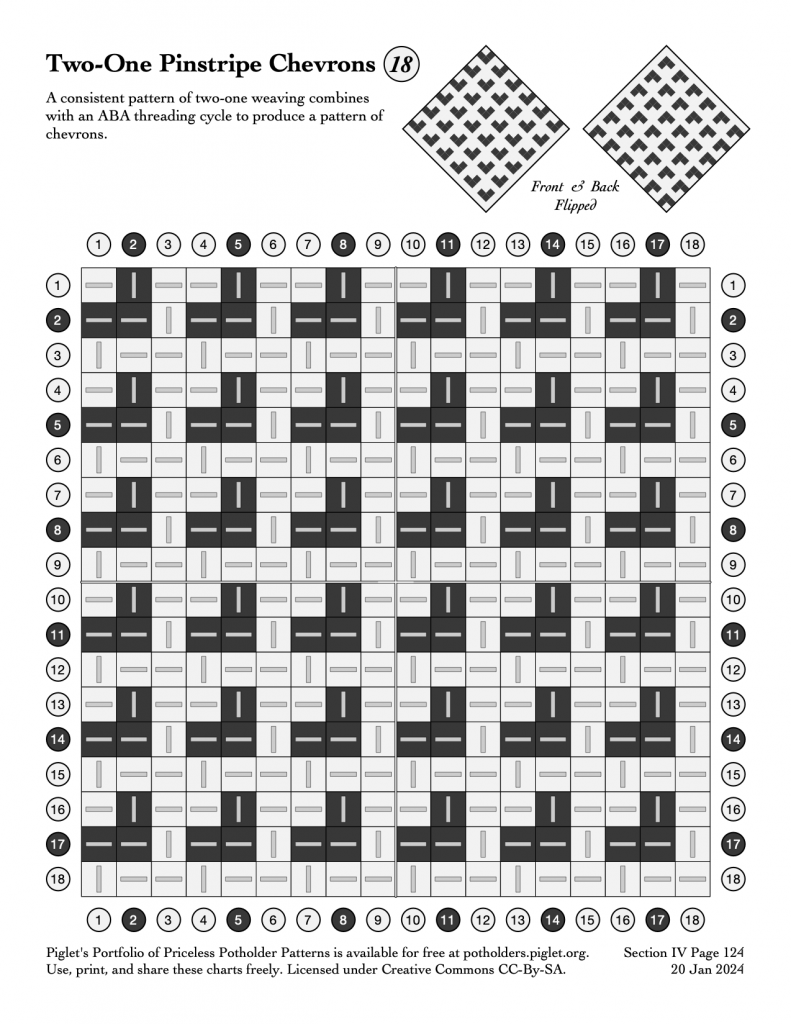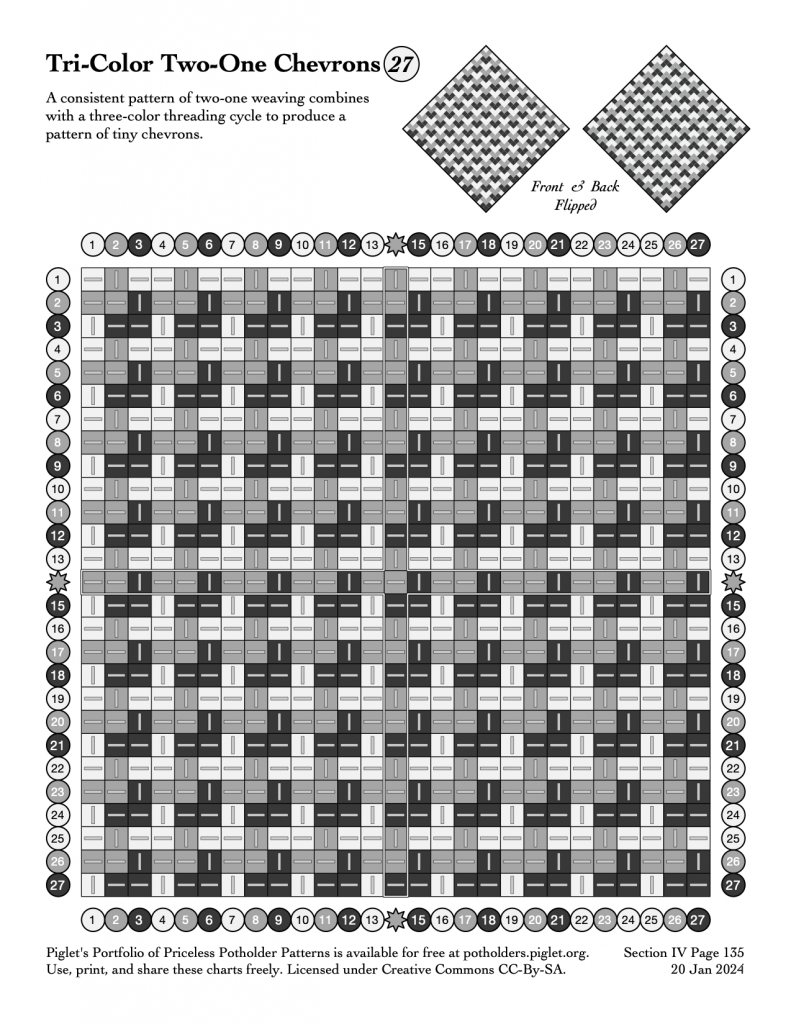Lozenge twill, sometimes called diamond twill, is an attractive family of weaving structures that produced by reversals in twill direction.
I say it’s a “family” because there are many variations, depending on how frequent the reversals are — ranging from little “birds-eye” twills up to big chunky diamonds — not to mention the variations produced by switching between 2/2, 2/1, 3/3, or any number of other twill ratios.
But how many such patterns are there, given the constraints of our tiny potholder looms, and how different would they look? A bit of web-searching failed to turn up an answer, so with Piglet’s help, I decided to try to explore this question systematically.
The results were startling — even just confining ourselves to 2/2 twill, and the limited canvas provided by the traditional-size loom, there are hundreds of distinct possibilities.
I charted a few dozen of them, and Piglet got to weaving, figuring that by sampling a few points in the space of possibilities we could decide which ones were the most attractive, and add those to the collection on our website.
… but they were all lovely, and it’s impossible to decide!
I’m not sure the world really needs a hundred different lozenge twill potholder-weaving charts, but I figured I’d start by presenting some of what we found and we’ll work out the rest of the details as time goes on.
You can view the first tranche of more than fifty charts in this PDF file, and I’ve included an analysis of some of the similarities and differences between them below.
Pattern Comparison
To understand the relationships between the patterns that appeared at different scales, I gathered small versions of each on a summary diagram.

The diagram shows a range of repeat sizes, along with two variations available at each size. (Each of these variations also has an equivalent with inverted colors, which I am omitting for simplicity.) Below each miniature chart is a label that encodes some information about it, explained more fully below.
Next Steps
As you scan across the diagram, you’ll find various motifs that repeat in adjacent charts, and similarities that emerge at regular intervals across them, and you can guess at charts that might look good side-by-side as a pair… but it’s important to remember that the woven products will look different than these digital charts, and the real test is when the loops come off the loom and draw up into their final fabric form — so it’s no use just staring at the pictures, you have to dive in and weave them up and see how they turn out in real life.
… which is exactly what Piglet has been doing. More photos in the next post!
About the Chart Labels
Each image on this grid is labeled with [Half Repeat Width] / [Half Repeat Height] — [Center] [Adjacent].
The repeat scales are shown as half of the number of loops in the warp or weft before the pattern repeats.
The center and adjacent values refer to the “spot” in the very center of the design, and to the corresponding spots that are diagonally adjacent to it; they are shown as:
- A: black dot
- B: black plus
- a: white dot
- b: white plus
Each image’s center/adjacent values can be one of the following:
- AA / BB: tiles all same colors, same center.
- Aa / Bb: tiles alternating colors, same centers.
- AB / BA: tiles all same colors, alternating centers.
- Ab / Ba: tiles alternating colors, alternating centers.
At each given repeat size, the pair of images will fall into one of these groupings:
- AA + Bb: identical black-dot tiles paired with alternating-color plus tiles.
- Aa + BB: alternating-color dot tiles paired with identical black-plus tiles.
- AB + BA: black-dot and black-plus tiles; paired versions are same pattern but offset.
- Ab + Ba: tiles have mixed centers and colors; paired versions are inverted and offset.

